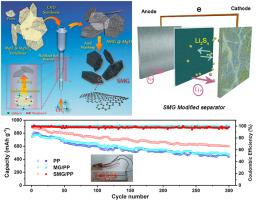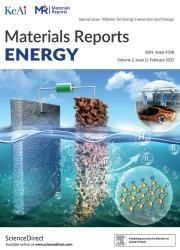S-doped mesoporous graphene modified separator for high performance lithium-sulfur batteries
Abstract
Due to their low cost, environmental friendliness and high energy density, the lithium-sulfur batteries (LSB) have been regarded as a promising alternative for the next generation of rechargeable battery systems. However, the practical application of LSB is seriously hampered by its short cycle life and high self-charge owing to the apparent shuttle effect of soluble lithium polysulfides. Using MgSO4@MgO composite as both template and dopant, template-guided S-doped mesoporous graphene (SMG) is prepared via the fluidized-bed chemical vapor deposition method. As the polypropylene (PP) modifier, SMG with high specific surface area, abundant mesoporous structures and moderate S doping content offers a wealth of physical and chemical adsorptive sites and reduced interfacial contact resistance, thereby restraining the serious shuttle effects of lithium polysulfides. Consequently, the LSB configured with mesoporous graphene (MG) as S host material and SMG as a separator modifier exhibits an enhanced electrochemical performance with a high average capacity of 955.64 mA h g−1 at 1C and a small capacity decay rate of 0.109% per cycle. Additionally, the density functional theory (DFT) calculation models have been rationally constructed and demonstrated that the doped S atoms in SMG possess higher binding energy to lithium polysulfides than that in MG, indicating that the SMG/PP separator can effectively capture soluble lithium polysulfides via chemical binding forces. This work would provide valuable insight into developing a versatile carbon-based separator modifier for LSB.


 求助内容:
求助内容: 应助结果提醒方式:
应助结果提醒方式:


